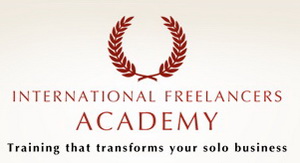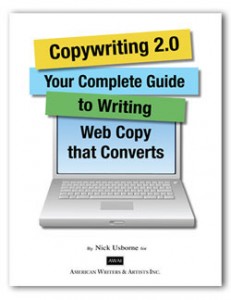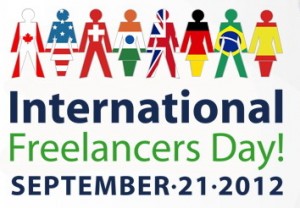 Despite the meteoric growth in freelancing and self-employment over the past decade, very little information has been published about who freelancers are, what they do, how they land work, what they earn, and why they freelance. The 2012 Freelance Industry Report by Ed Gandia seeks to fill this information gap.
Despite the meteoric growth in freelancing and self-employment over the past decade, very little information has been published about who freelancers are, what they do, how they land work, what they earn, and why they freelance. The 2012 Freelance Industry Report by Ed Gandia seeks to fill this information gap.
In the report’s introduction, Gandia cites a May 2012 Aberdeen Group report that shows that in the average organization in the U.S., nearly 26% of the workforce is considered contingent or contract-based. The labor law firm Littler Midelson predicts that over the next few years, contingent labor (i.e., freelancers, consultants and independent contractors) could rise to as much as 30 to 50 percent of the entire U.S. workforce.
“Politicians and the mainstream media seem to completely overlook this segment of the workforce,” says Gandia. “When addressing the needs of small businesses, most discussions center on traditional brick-and-mortar operations. Freelancers and other self-employed service providers are ignored, forgotten or dismissed.”
The bulk of the free, 70-page report summarizes the findings of a 2012 survey of 1,491 freelancers in more than 50 different fields. The top 10 professions represented in the survey of freelancers were:
- Designers (20.4 percent)
- Writers (18 percent)
- Editor/Copy Editor (10 percent)
- Copywriter (10 percent)
- Translator (7 percent)
- Web Developer (5 percent)
- Marketing Profesional (4 percent)
- Business Consultant (2 percent)
- Virtual Assistant (2 percent)
- Illustrator (2 percent)
Other creative professionals represented in the survey included Photographers, Videographers/Video Editors, and Authors at around 1 percent each. Other freelancers specialized in proofreading, IT systems support, training, software development, public relations, blogging, SEO, and social media.
Survey Findings
The report includes charts and data on income trends and lifestyle choices, including: hourly rates, billable time, pricing, the impact of the economic downturn, and how freelancers attract clients. Here are some noteworthy findings:
Status: 47 percent are the primary income earners in their households; 14 percent work their business on the side while holding a full-time day job.
Age: 62 percent of the freelancers were under age 50, with 26 percent in the 30 to 39 age range and 25 percent in the 40 to 49 age group. Of the 38 percent over age 50, 12 percent were age 60 and up.
Satisfaction: 90 percent report being happier now than before going solo. 55 percent said that they wouldn’t consider working as an employee again, regardless of what the job paid or what it entailed.
Business Prospects: Fully 77 percent of the respondents said that they are optimistic about their business prospects over the next year. Pessimism was highest among photographers (25 percent), business consultants (16 percent), and editors/copy editors (16 percent).
Challenges: The biggest challenges facing freelancers as a group were:
- Finding clients (21 percent)
- The feast-or-famine cycle of work (16 percent)
- Maintaining work/life balance (10 percent)
- Managing time/staying productive (7 percent)
- Getting better fees (5 percent)
- Getting affordable health insurance (4 percent)
- Having to wear all the hats (4 perecent)
Professionals who reported the most difficulty finding clients included photographers (33 percent) and copywriters (27 percent).
Marketing Methods: 68 percent of freelancers named referrals, word of mouth or tapping their own personal and professional networks as their most effective methods for finding and landing clients. Only 6 percent considered online job sites such as Elance and oDesk to be most effective way to get clients, and a mere 3 percent ranked social media as the most effective method.
Self-Promotion: Even though finding clients is the top challenge facing freelancers, most freelancers (53 percent) said they spend five hours or less on self-promotion. In fact, 30 percent spend fewer than 2 hours per month. Only 12 percent spend more than 20 hours per month on self-promotion. Photographers (44 percent) and copywriters (17 percent) were among those who said they spent more than 20 hours per month promoting themselves.
Accidental and Entrepreneurial Freelancers
The report takes an in-depth look at differences in the data among two key groups: accidental and entrepreneurial freelancers.
“Accidental” freelancers include those who started freelancing as a result of a layoff or company downsizing. The report reveals that “accidental” freelancers are faring well. About 85 percent said they are much happier now than they were as employees, even though they are more likely to earn less than freelancers who planned their way to self-employment. Still, 66 percent of the accidental freelancers are optimistic about their business prospects.
When asked whether or not they considered themselves to be entrepreneurs, 72 percent of the survey respondents said yes. The professionals most likely to identify themselves as entrepreneurs were business consultants, virtual assistants, and copywriters. Photographers, researchers, and editors were the least likely to view themselves as entrepreneurial.
Freelancers who regard themselves as entrepreneurs tend to be happier and earn higher rates: 38 percent of “entrepreneurial” freelancers earn $70 or more per hour, as opposed to 20 percent of non-entrepreneurial freelancers. When asked if they were happier overall since they started freelancing, 92 percent of the self-labeled entrepreneurs said yes, compared to 86 percent of the freelancers without the entrepreneurial mindset.
International Freelancers Day: September 21
The 2012 Freelance Industry Report helps set the stage for the International Freelance Day event on Friday, September 21. Sessions at the free, online conference are designed to help freelancers take their business to the next level. Experts will cover a mix of business and personal development topics and present tips for negotiating, prospecting, writing winning proposals, promoting yourself, keeping your creativity flowing, and designing an abundant life.
LINKS
The 2012 Freelance Industry Report
About Ed Gandia and The International Freelancers Academy
International Freelancers Day
 According to Videomaker, “Finding the right, fair price to charge for video work is a delicate balancing act. Unfortunately, for most videographers it’s little more than a guessing game. But the simple truth is that if you don’t know what your services are worth, there’s no way to run a successful video business.”
According to Videomaker, “Finding the right, fair price to charge for video work is a delicate balancing act. Unfortunately, for most videographers it’s little more than a guessing game. But the simple truth is that if you don’t know what your services are worth, there’s no way to run a successful video business.”









